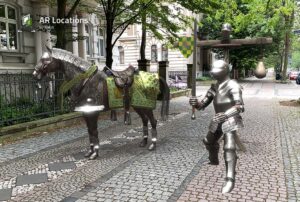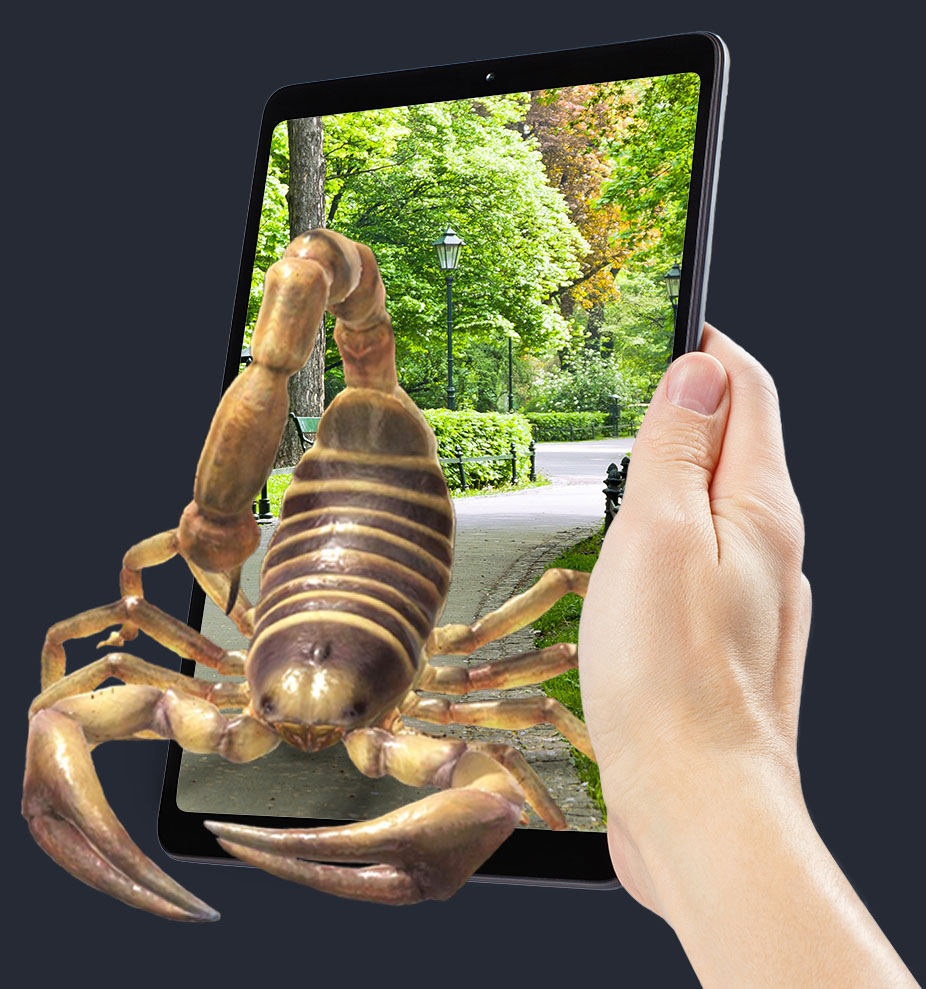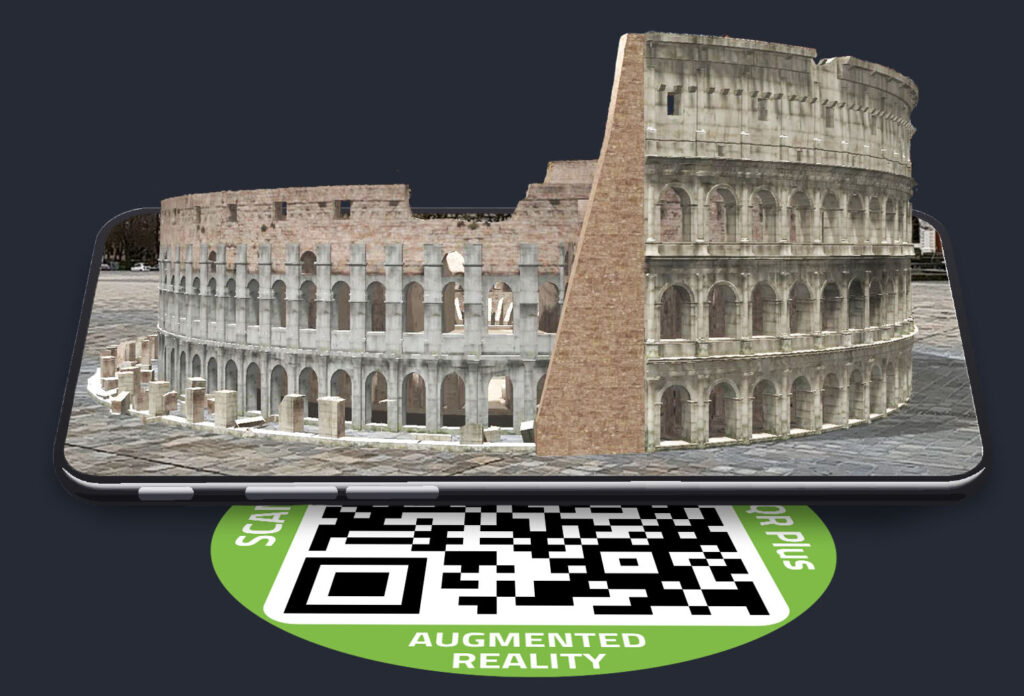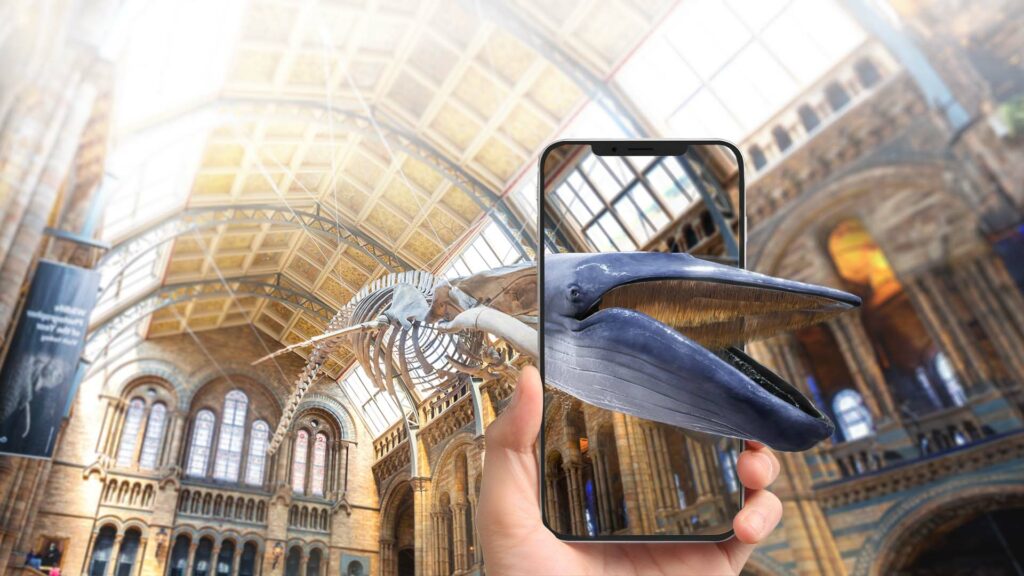
Close
Design your own exhibition
All Scenes
All exhibitions
Enhance real experiences with digital magic
What is augmented reality?
Augmented reality (AR) is a computer-based extension of our perceptible reality. Generally, all human senses are addressed, but often it is just a matter of visual or auditory representation of information, e.g. in the form of an overlay.
AR is a disruptive technology that is changing the way we interact with the world around us. At its core, AR enriches our perception of reality by seamlessly merging the physical world with digital elements.
The main advantage over virtual reality is that reality is still perceptible with AR. The user still has the familiar ability to respond to external stimuli. AR visualizations immerse you in a hybrid world of fully virtual content and the real environment, where you experience events from reality enriched with digital elements.


How does augmented reality work?
AR works through a combination of cutting-edge hardware and software. When you scan a QR code with a compatible device, such as a smartphone or tablet, its camera captures the physical environment. At the same time, intelligent algorithms process this real-world data and enable the device to understand its surroundings. Then, digital information, 3D models, animations or interactive overlays are precisely positioned in your view.
How does QR code-based augmented reality work?
QR code-based AR works by using QR codes as triggers for AR experiences. When a user scans a QR code with a compatible mobile device, the device is prompted to display AR content, which is then superimposed on the user’s real world via the device’s camera.
One of the most exciting applications of AR technology is location-based marketing. QR-based AR offers several significant benefits for location-based marketing, making it a powerful tool for companies that want to engage with customers in the physical world and provide them with relevant and engaging experiences in real time. It is a versatile tool that can be used in a variety of industries including retail, hospitality and tourism, entertainment and events, and real estate to improve the overall customer experience and drive real-world results.

AR offers a novel and interactive way to engage with customers. By offering immersive experiences, you can capture the attention of potential customers and keep them engaged longer.

AR enables highly personalized content delivery. You can tailor AR experiences to the specific location and context of the user. This personalization can lead to more relevant and engaging interactions.

QR codes are widely supported by smartphones and other devices. Users are familiar with scanning QR codes, which facilitates the integration of QR-based AR into marketing strategies without much user training.

You can track user interactions, including the number of scans, time spent in the AR experience, click-through rates, and conversion rates. This data helps evaluate the effectiveness of marketing campaigns and inform decision making.

Users who have a positive experience with AR are likely to share it with friends and on social media. This word-of-mouth marketing can help increase the reach of a campaign and bring more potential customers to your site.
AR is revolutionizing marketing by opening up new ways to interact with consumers, creating immersive and interactive experiences, and providing highly targeted and personalized content. As AR technology evolves and becomes more accessible, its impact on the marketing industry is expected to grow, providing companies with innovative tools to reach and engage with their target audiences.
